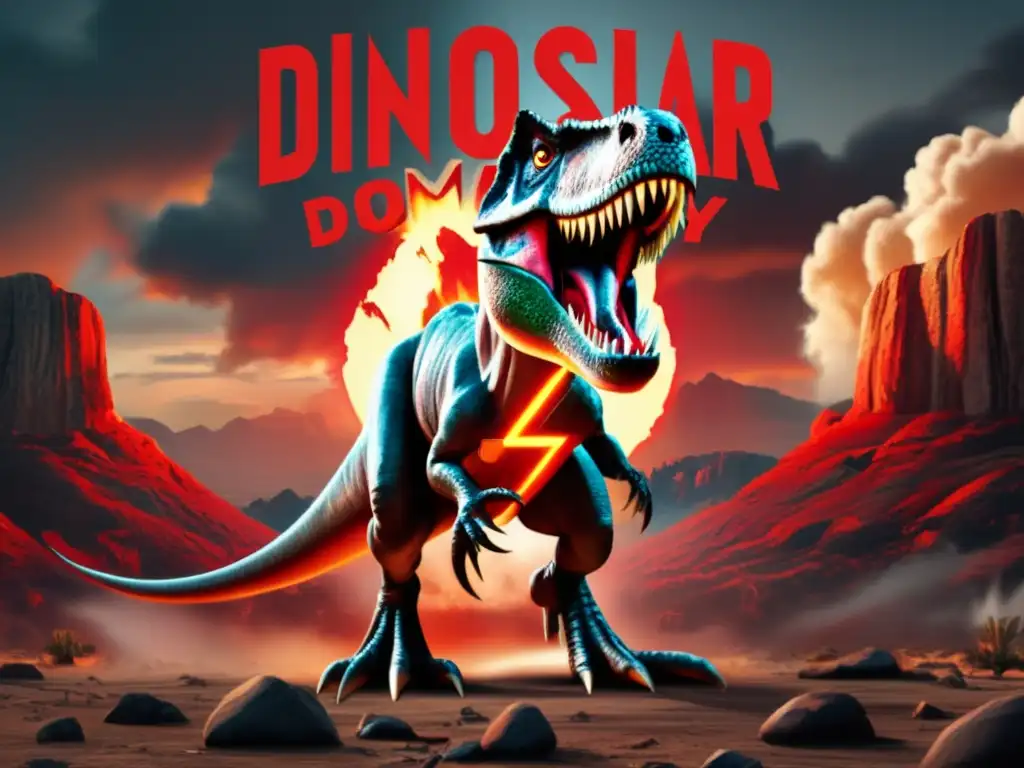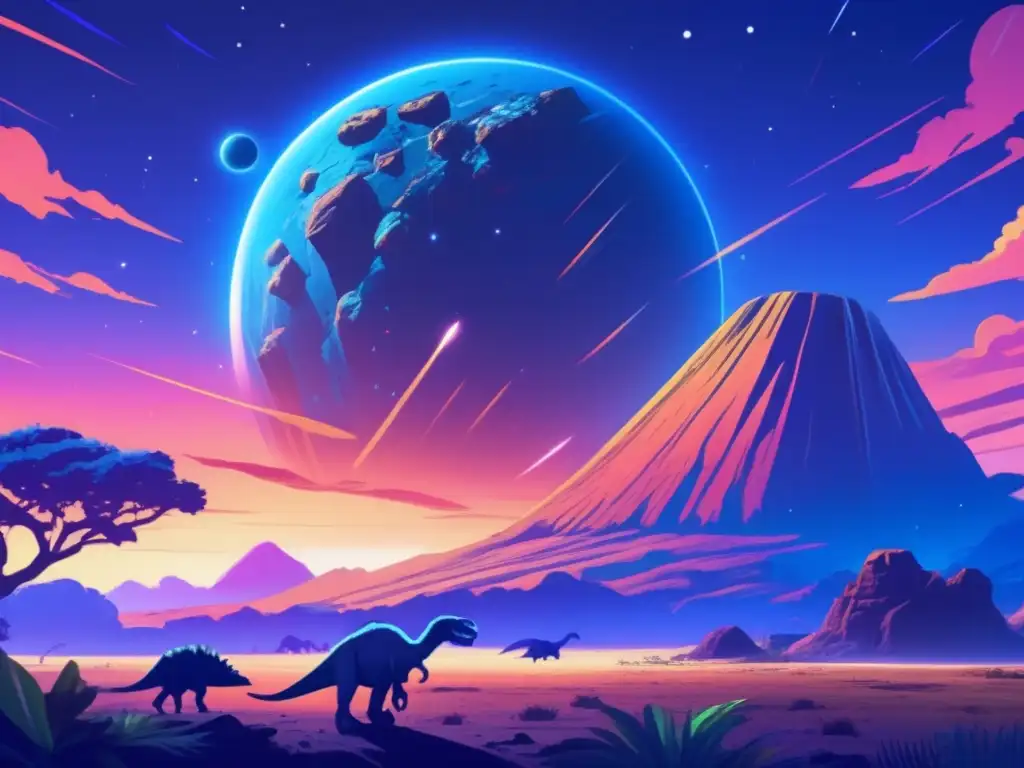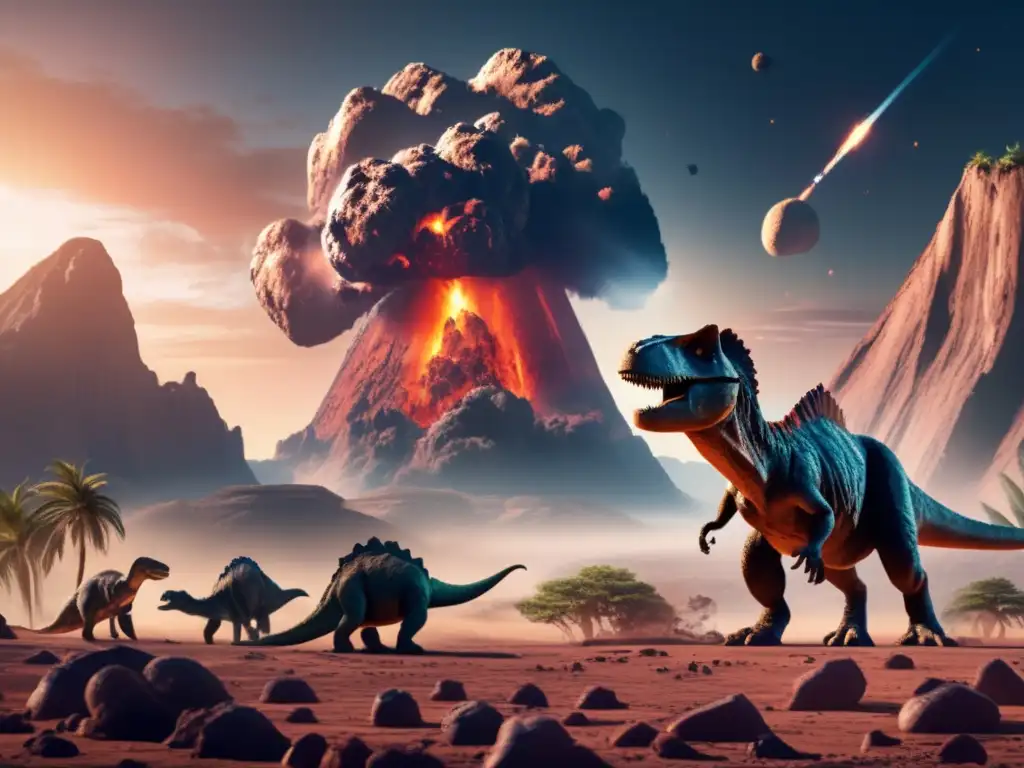Asteroids And The Dinosaur Doomsday Clock

Introduction
Asteroid impacts have been a source of fascination for humans for centuries. These celestial objects have caused significant changes on Earth throughout its history, including mass extinctions. One of the most famous examples is the extinction of the dinosaurs, which occurred about 65 million years ago. This event has fueled the idea that asteroids may pose a threat to life on Earth. In this article, we will explore how asteroids and the dinosaur doomsday clock are related.
What is the dinosaur doomsday clock?

The concept of the dinosaur doomsday clock
The dinosaur doomsday clock is a hypothetical timeline of the events leading up to the extinction of the dinosaurs. The clock starts ticking at the beginning of the Mesozoic Era, about 252 million years ago, and ends with the impact of the asteroid that caused the extinction event. This clock is used to visualize the importance of the asteroid impact as the main cause of the dinosaur extinction.
The role of asteroids in the dinosaur doomsday clock
Asteroids played a critical role in the dinosaur doomsday clock because one of them impacted the Earth, causing widespread devastation. The asteroid, known as the Chicxulub impactor, was about 10-15 kilometers wide and released energy equivalent to billions of atomic bombs. Its impact caused a global winter, acid rain, and massive wildfires, among other consequences. The dinosaur doomsday clock shows that the asteroid impact was the final nail in the coffin for the dinosaurs and most other life forms on the planet at the time.
The importance of understanding the dinosaur doomsday clock
Understanding the dinosaur doomsday clock is critical because it can help us prepare for potential asteroid impacts in the future. By studying the causes and consequences of ecological catastrophes like the dinosaur extinction, we can better predict the effects of similar events and develop strategies to mitigate their impact on life on Earth.
How are asteroids linked to the dinosaur doomsday clock?

The connection between asteroids and mass extinctions
Asteroids have been linked to several mass extinctions throughout Earth's history. There is evidence that an asteroid impact was responsible for the extinction of the dinosaurs, but other impacts have been implicated in mass extinctions as well. For example, the Late Heavy Bombardment period, about 4 billion years ago, may have caused the extinction of early life forms on Earth. The Permian-Triassic extinction, about 252 million years ago, which wiped out about 96% of marine species and 70% of land species, is also thought to have been caused by a massive asteroid impact.
The role of asteroids in shaping Earth's history
Asteroids have shaped Earth's history in more ways than just causing mass extinctions. They have also contributed to the formation of the planet itself, bringing water and organic molecules to the surface. Asteroids have impacted Earth throughout its history, leaving craters that tell us about the geological processes that have shaped our planet over billions of years.
The importance of studying asteroids for understanding the dinosaur extinction
Studying asteroids is crucial for understanding the dinosaur extinction because it allows us to reconstruct the events leading up to the impact. By analyzing the composition of the Chicxulub impactor and other asteroids, we can learn about their orbits, origins, and potential threats to Earth. We can also use this knowledge to develop defenses against potential asteroid impacts in the future.
What is being done to prevent an asteroid impact?

The role of NASA in tracking asteroids
NASA is one of the agencies responsible for tracking asteroids and predicting potential impact events. The agency's Near-Earth Object Observations Program monitors objects that may pose a threat to Earth and provides warnings about potential impacts. NASA also conducts research on ways to mitigate the effects of an impact, such as deflecting or destroying the asteroid before it reaches Earth.
The importance of international collaboration in asteroid defense
International collaboration is critical for preventing asteroid impacts. The United Nations Office for Outer Space Affairs has been working to promote international cooperation in asteroid defense since 1996. The agency has developed guidelines and strategies for dealing with potential impact events and encourages nations to work together to develop defenses against asteroids. In addition, organizations like the B612 Foundation and the Planetary Society are also working to raise awareness about the potential threat of asteroids and to develop technologies to protect Earth from impacts.
The need for continued research on asteroids
More research is needed to fully understand the threat posed by asteroids and to develop effective strategies for preventing impact events. This includes studying the composition and behavior of asteroids, developing new technologies for detecting and tracking asteroids, and improving our understanding of how asteroid impacts affect life on Earth.
Frequently Asked Questions

-
How likely is an asteroid impact?
Asteroid impacts are rare but potentially catastrophic events. While the likelihood of an impact in any given year is low, the consequences of an impact could be devastating. It is important to continue monitoring and studying asteroids to prepare for potential impact events.
-
What can we do to prevent an asteroid impact?
There are several strategies for preventing an asteroid impact, including deflecting or destroying the asteroid before it reaches Earth. More research is needed to develop and test these technologies and to improve our understanding of how asteroid impacts affect life on Earth.
-
Are there any asteroids currently posing a threat to Earth?
NASA's Near-Earth Object Observations Program tracks asteroids that may pose a threat to Earth. As of now, there are no known asteroids on a collision course with Earth in the near future. However, new asteroids are discovered all the time, so continued monitoring is necessary.
-
What happens if an asteroid does impact Earth?
The consequences of an asteroid impact can vary depending on the size and composition of the asteroid and the location of impact. However, the effects could include a global winter, acid rain, massive wildfires, and other catastrophic events that could drastically alter life on Earth.
-
How long would it take to prepare for an asteroid impact?
Preparations for an asteroid impact would depend on several factors, including the size and trajectory of the asteroid and the amount of warning time available. Current technologies could potentially deflect or destroy an asteroid several years before impact, but more research is needed to refine and test these strategies.
Conclusion
The dinosaur doomsday clock is a powerful reminder of the importance of understanding the threat posed by asteroids. While the likelihood of an impact in any given year is low, the consequences of such an event could be catastrophic. By studying asteroids and developing defenses against potential impact events, we can better prepare for this threat and ensure the safety of life on Earth.
At Asteroid Realm, we are committed to providing accurate and up-to-date information about asteroids and their impact on our planet. We encourage readers to share their thoughts and engage with us through comments, subscriptions, and other forms of participation. Thank you for your time and attention!
Additional Resources

For more information about asteroids and asteroid impacts, check out these resources:
- NASA's Near-Earth Object Observations Program
- UN Office for Outer Space Affairs: Space Debris and Near-Earth Objects
- B612 Foundation
- The Planetary Society
 The Asteroid Impact: The Catastrophe That Wiped Out Dinosaurs
The Asteroid Impact: The Catastrophe That Wiped Out Dinosaurs Cosmic Endgame: How Asteroids Ended The Age Of Dinosaurs
Cosmic Endgame: How Asteroids Ended The Age Of Dinosaurs Asteroids: The Cosmic Juggernaut That Ended The Dinosaurs
Asteroids: The Cosmic Juggernaut That Ended The DinosaursIf you want to discover more articles similar to Asteroids And The Dinosaur Doomsday Clock, you can visit the Asteroids and Dinosaurs category.
Leave a Reply

Articulos relacionados: